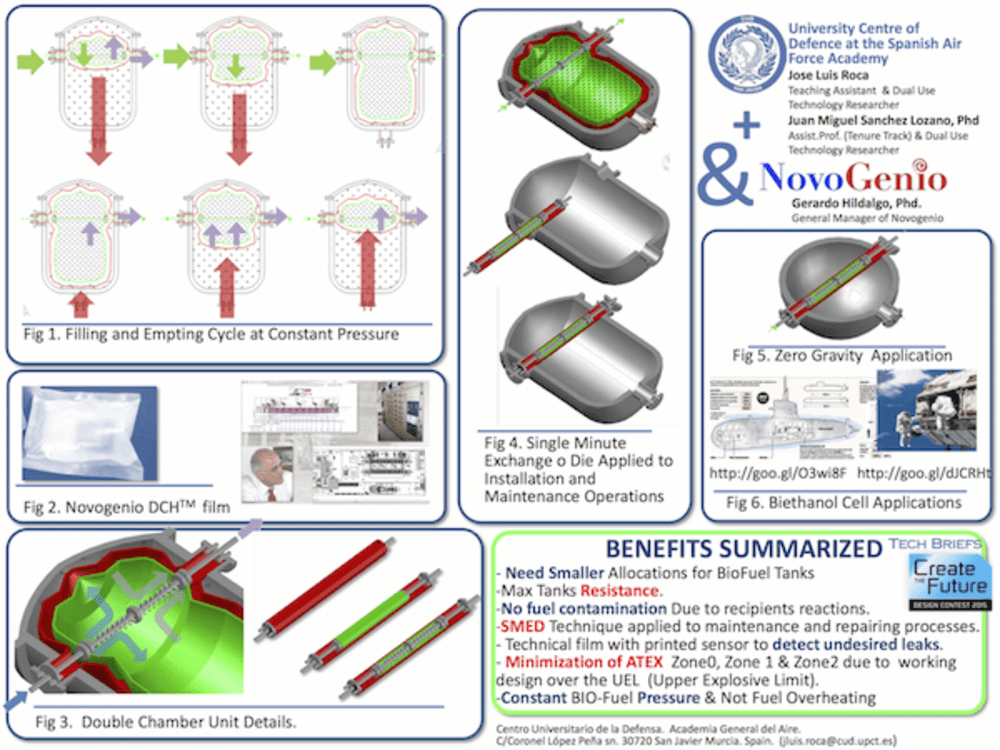The double layer chamber was designed to provide an industrial solution to chemical processes when preserving tough technical standards is a must in order to keep the contained fluid (most of them are new biofuels) free of undesired stain and contaminants which sometimes are generated inside the tanks that are used at nowadays industry.
As an innovative example, Bioethanol combustions cells are the kind of processes that may take advantage of this development. These cells needs pure bioethanol to work properly but the problem is that even the commercialized bio ethanol is not pure and so a filtering pre-process is needed before the fuel is driving to a stainless steel tank. Once inside the tank and due to normal cycle processes of filling and empting, the hazard of contaminating the fuel is a fact and there is no need to say about the inconveniences of maintenance processes of tank cleaning and repairing when they crack.
As a matter of fact, bioethanol tanks allocated at industrial areas have enough free space all around to allow comfortable maintenance operations, but when thinking in other types of industrial and defence applications a new design dimension is needed to be developed. As an example what could happen if inside an international space station one of these fuel tanks crack? or what could happen if inside an underwater facility or a submarine there is a need to repair any tank? Therefore the design challenge is to provide a fuel tank that preserve the pure chemicals properties of the fuel contained and be easily removable and installed if necessary as well.
The double layer chamber accomplishes these design challenges and act as a flexible organ manufactured to resist high pressures, abrasion and other desired properties. As a final result the tanks may low their prices due to non sense in the use of stainless steel, the outer tank acts then as a outer bone that prevent any direct impact with shaped surfaces. It has been designed also as an easily item to be installed according to Single Minute Exchange of Die (SMED) technique in order to handle as easy as possible during emergency process to collect any leaks which by the way will never escape out of the intermediate chamber and will be detected by some electronic sensor installed for that purpose.
This tank has been designed also to work at constant pressure so by a simple pressure control at the inert gas chamber, a constant flow may be guarantee even in a simultaneous process of filling-emptying this finally allow to decrease Zones 0, 1 & 2 of the explosive atmospheres because all the system works over the upper explosive limit.
Like this entry?
-
About the Entrant
- Name:Jose Luis Roca
- Type of entry:teamTeam members:Jose Luis Roca, University Centre of Defence at the Spanish Air Force Academy.
Juan Miguel Sanchez Lozano Phd, University Centre of Defence at the Spanish Air Force Academy.
Gerardo Hidalgo Phd. Novegenio@
- Software used for this entry:DFM Autodesk
- Patent status:pending

